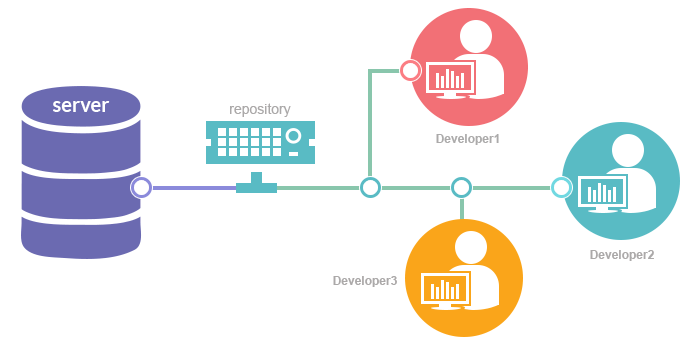What is Version Controller System
Version control is a system that can save changes to several files over a period of time so that the desired version can be used. If a web designer wants every version of a layout change to be saved, then the Version Control System (VCS) is the perfect tool to use. VCS allows you to restore your file to its previous position, restore the project to its previous position, compare each change that occurred, find out who changed the file and what the changes were, and so on. Using VCS also allows you to restore the position of the system when something goes wrong or files are lost.
Local Version Control System
The majority of people use the Version Control method by copying files to other folders. This method makes us forget which files we should use or incorrectly update files that are not needed. To overcome this, programmers have developed Local Version Control Systems (LVCs) which have a simple database that is useful for storing all changes that have been made.
Centralized Version Control Systems
The next problem we face is the need to collaborate with other developers. The existence of several programmers who develop an application simultaneously allows for misunderstandings (programmer A’s file is overwritten by programmer B’s file). The program used to solve this problem is the Centralized Version Control System (CVCS). CVSC is almost similar to CVS which has one server that contains all version files, and several clients that can checkout files to a central server. For several years CVCS has been the standard for version control.
By using CVCS, it allows us to get many benefits. For one thing, everyone who has access to or is involved in the project can know what each member is doing. Administrators have control over who has the right to do things, and it’s also easier to control CVCS than the local database on each client. However, CVCS also has its drawbacks. The most basic is the single point of failure caused by the centralized server. If the server shuts down within an hour, all project teams using CVCS will not be able to save the changes they have made. If the central server hard drive is corrupt or damaged, and the backup has not been done, then almost all project history data will be lost, except for the last snapshot on each client.
Distributed Version Control Systems
This is where the emergence of a new model, namely Distributed Version Control Systems (DVCS) which complements the weaknesses of CVCS. In DVCS (such as GIT, Mercurial, Bazaar, etc.), the client does not just checkout the latest version of the file, but the entire copy of the repository. Therefore, if the server dies or the hard drive is corrupted, the repository on the client can be copied to the server to restore the server. Each clone is a full backup of all data
The need for digital IT is needed in daily activities, Bead IT Consultant is the right choice as your partner, visit our website by clicking this link: www.beadgroup.com

